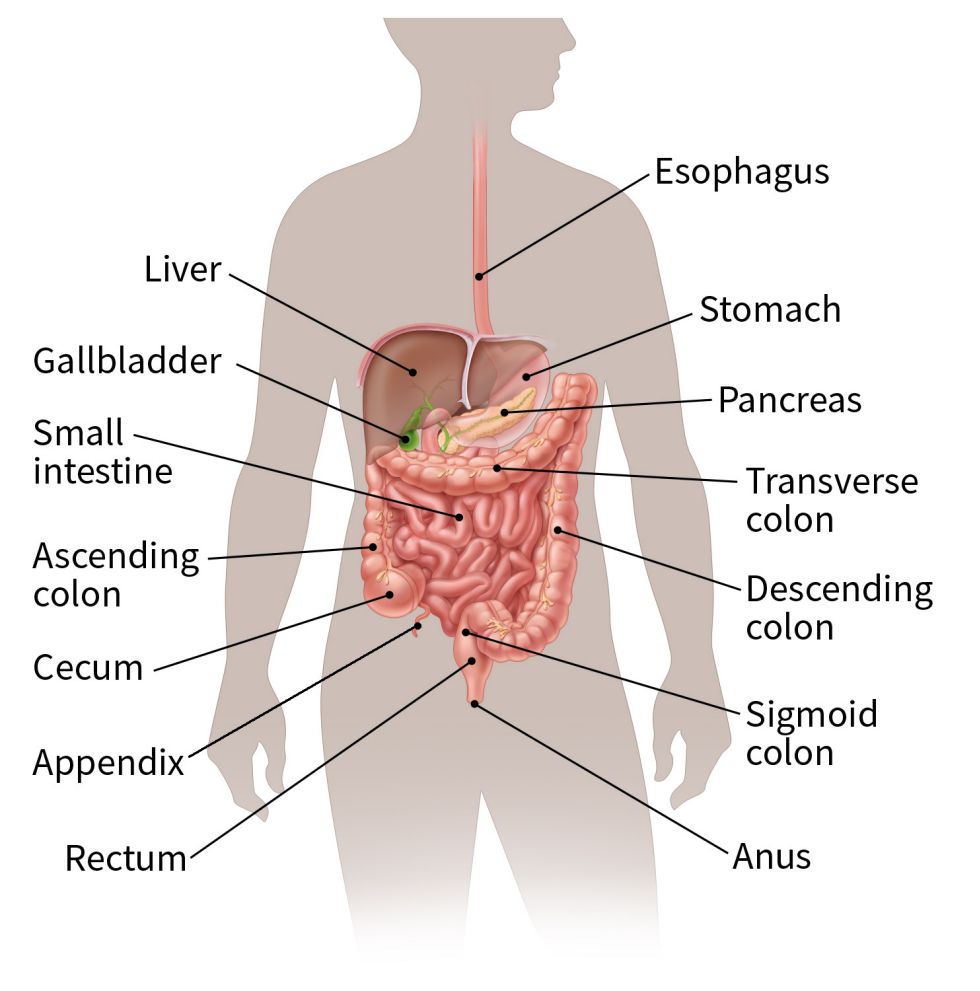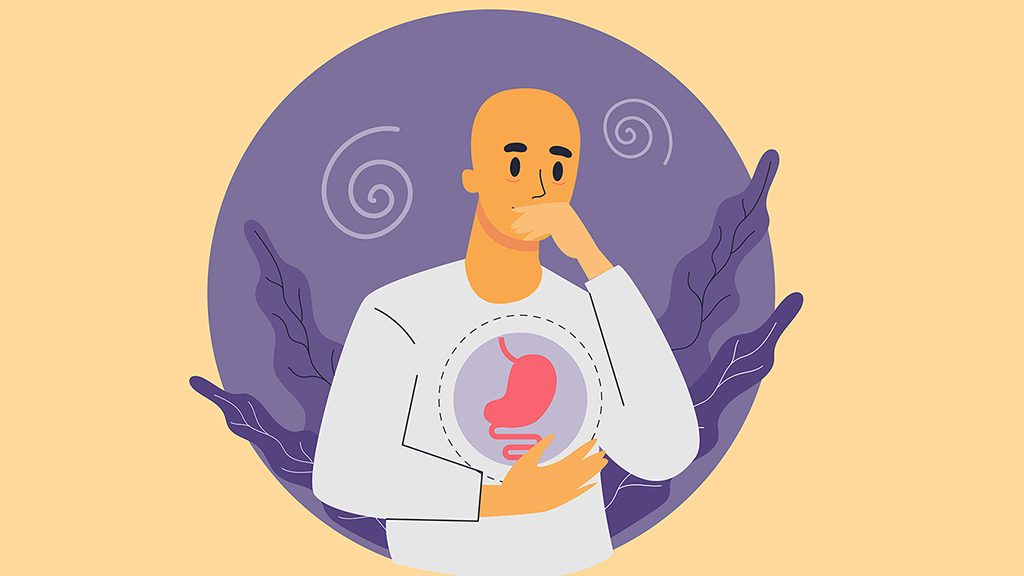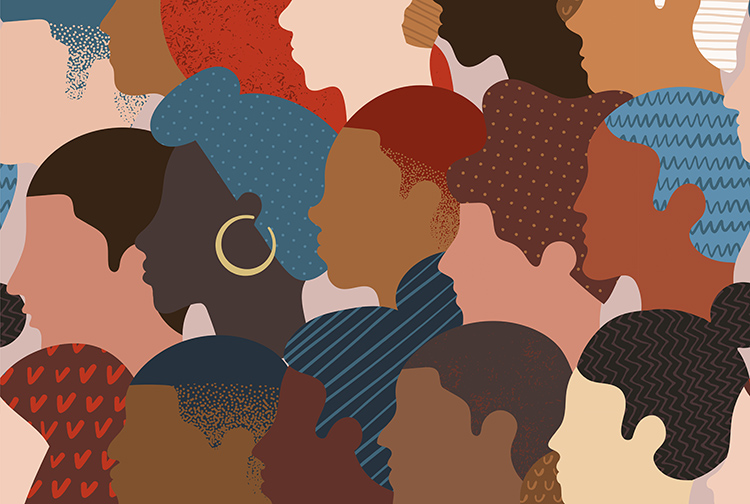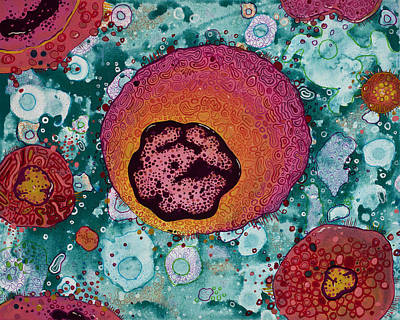Colon cancer and rectal cancer are often grouped together because they have many common features, as in the case of colorectal cancer.
Colorectal cancer starts in the colon or the rectum, and are either called colon cancer or rectal cancer depending on where they start.
The Colon

The colon, or the large intestine, is about 5ft long. It’s divided into the following sections:
- The ascending colon, starting with the cecum. Undigested food comes through the small intestine and continuing upwards on the right side of the abdomen.
- The transverse colon, going across the abdomen from right to left side.
- The descending colon, traveling down on the left side.
- The sigmoid colon (S-shaped), which joins the rectum and the anus.
The colon and rectum work by absorbing salt + water from food matter left over from small intestine. The remaining waste will then go into the rectum (final 6 in) of digestive system and stored there until it passes through the anus.
Most colorectal cancers start as a growth on the inner lining of the colon or rectum. These growths are called polyps.
https://www.cancer.org/cancer/colon-rectal-cancer/about/what-is-colorectal-cancer.html
Colonoscopies can help screen for polyps and remove them as well. However, not all polyps change into cancer. The likeliness that a polyp becomes cancer does depend on the type of polyp:
Cancer and Progression

If cancer, or uncontrollable growth of cells, forms in polyps, it may spread into the colon or rectum wall over time, starting from innermost layer of the mucosa into other layers of the organ wall.
When cancer cells are in the colon or rectum wall, then they are able to grow into blood vessels and lymph vessels and travel to distant parts of the body.
The stage and extent of cancer spread (or metastasis) of a colorectal cancer depends on how deeply the cancer grows into the wall and if it spread to other locations beyond colon/rectum.
Staging
- ‘in situ’ lesions, pre-invasive cell growths
- ‘localized’ lesions that invaded walls of colon/rectum
- ‘regional’ lesions that invaded nearby tissues, lymph nodes, organs
- ‘distant’ cancers that metastasized to other parts of body
Epidemiology
- The third most deadly in the world
- Fourth most commonly diagnosed worldwide
- CRC incidence rising worldwide, especially in countries with more ‘Western’ diet
Risk Factors
- Type 2 diabetes
- Inherited syndromes and genes linked to colorectal cancer
- Family history
- Personal history of inflammatory bowel disease
- Alcohol use
- Smoking
- Certain diet + lack of exercise
Screening & Diagnosis
- Colonoscopy
- Blood test
- Proctoscopy
- Biopsy
- Imaging (could be part of staging tests to determine cancer stage)
- CAT/CT, MRI, PET, X-ray
Sign and Symptoms
- Early stage can present with no defining symptoms
- Rectal bleeding
- Bloody stool, dark/black stool
- Constant changes in bowel habits (chronic constipation or diarrhea)
- Pain in lower abdomen
- Decreased appetite +unintentional weight loss
Current Treatments + Therapies
- Early polyps can be removed via polypectomy during colonoscopies, via endoscopic mucosal resection, or laparoscopic surgery
- For more advanced colon cancer:
- Various types of surgery to remove the tumor and parts of the colon depending on cancer stage
- Chemotherapy
- Radiation therapy
- Targeted drug therapy
- Immunotherapy
- Palliative care

Biology and Treatment Research
Further readings and resources on biology of cancer and treatment therapies
Explore More Resources

Young People, Screening, Prevention, and Diagnosis
Is cancer really an ‘old people’ disease? What is there to know about screening and prevention? Are diagnoses accurate?
/arc-anglerfish-arc2-prod-pmn.s3.amazonaws.com/public/AI2T4723YJFB3BEHR4QKNTN2Q4.jpg)
Patient Experiences
Narratives, storytelling, support groups.

Treatments and Side Effects
What you might not know, from the patients’ perspectives

Health Disparities
Across the intersection of race, gender, socioeconomic status, culture, access, and more

Care and Recovery
Beyond aggressive treatment therapies: pain management, goal setting, and restoring humanity

Illness in Art, Media, and Literature
How is cancer depicted?
